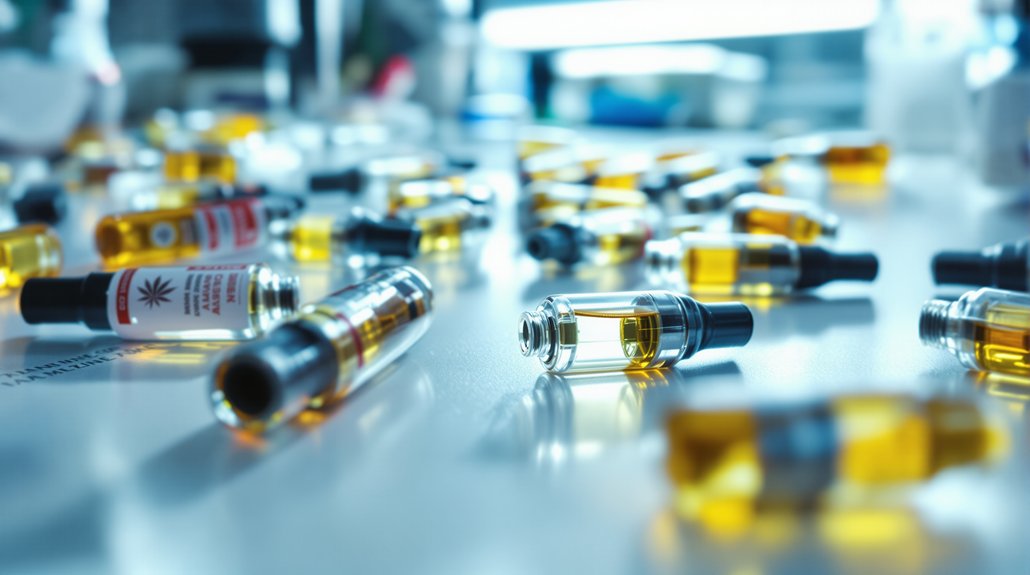How many contaminated vape cartridges does it take to trigger a public health crisis? In California’s cannabis industry, the answer appears to be tens of thousands, as regulators face record numbers of recalls involving pesticide-laced vape products that pose serious health risks to consumers.
The Department of Cannabis Control has initiated multiple mandatory recalls over the past two years, with contaminated products reaching alarming quantities. West Coast Cure‘s “Orange Cookies” vape cartridge was pulled from shelves after exceeding safety limits for chlorfenapyr, a dangerous insecticide. The scope expanded dramatically when Infinite Chemical Analysis identified over 62,000 vape cartridges manufactured in September 2023 across assorted flavors, all containing unacceptable pesticide levels.
Testing revealed disturbing contamination patterns throughout the supply chain. Laboratories detected paclobutrazol, a pesticide not permitted at any level in cannabis products, alongside trifloxystrobin at four times above safe limits. Bloom issued California’s first product recall for cannabis vape cartridges containing myclobutanil, affecting multiple product lines including BloomVape cartridges, BloomOne Disposables, and BloomDrop products sold at nearly 100 retailers statewide.
The recall system demonstrates both strengths and weaknesses in California’s regulatory framework. When contamination poses immediate threats to human health, the DCC requires licensees to immediately stop distribution and remove affected products from the market. Recall announcements reach consumers through company websites and regulatory portals, with one contaminated product requiring notifications to 169 retail locations. The new Cannabis Recall Portal provides consumers with improved search functionality and enhanced access to recall information quickly.
However, detection gaps raise concerns about oversight effectiveness. Several contaminated batches had originally received safety certifications from laboratories with subsequently suspended licenses, including Verity Analytics. Reliable labs would have detected these contaminants using LC-MS/MS techniques specifically designed for pesticide analysis in cannabis products. Independent testing from facilities like Infinite Chemical Analysis often contradicts initial lab results, highlighting potential conflicts between state-certified findings and private laboratory assessments. The industry has struggled with seven-month delays between initial contamination reports and official recall actions.
The health implications cannot be understated. Pesticides like chlorfenapyr, myclobutanil, paclobutrazol, and trifloxystrobin pose potential health hazards when inhaled through vaping devices. These chemicals were never intended for human consumption, particularly through the concentrated delivery method that vaping provides.
Recent incidents underscore the scale of the problem. At least 62,000 units from West Coast Cure and nearly 5,000 units from individual batches have been directly affected in single recall events. Mr. Zips vape cartridges joined the recall list in August 2025 due to unspecified pesticide contamination, adding to the growing inventory of compromised products.
The DCC oversees proper handling and disposal of recalled products to prevent further exposure, but the frequency of these incidents suggests systemic issues requiring thorough solutions. As California’s cannabis industry matures, addressing pesticide contamination in vape products remains a critical public health priority.





